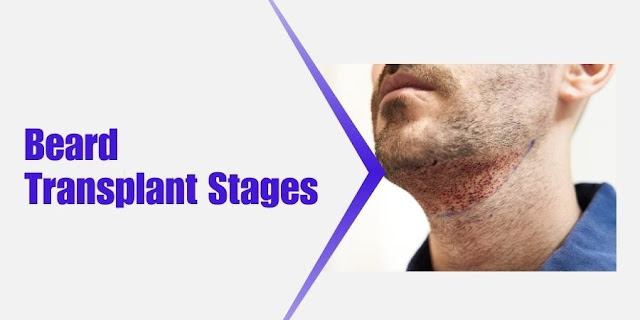A beard transplant is a surgical procedure used to restore or enhance facial hair in individuals who have thin or patchy beard growth. The procedure involves the transplantation of hair follicles from one area of the body (usually the back of the scalp) to the beard area. The process typically involves several stages:
Consultation:
Beard Transplant Stages
Before the procedure, you will have a consultation with a qualified surgeon or dermatologist. During this consultation, the doctor will assess your suitability for a beard transplant, discuss your goals, and explain the procedure in detail.
Preoperative Preparation:
Prior to the surgery, you may be asked to follow specific guidelines such as avoiding certain medications and alcohol, quitting smoking, and abstaining from alcohol to ensure the best results and minimize the risk of complications.
Anesthesia:
On the day of the surgery, local anesthesia is administered to the donor and recipient areas. This ensures that you remain comfortable and pain-free during the procedure.
Donor Hair Extraction:
The surgeon will typically harvest hair follicles from the donor area, which is usually the back of the scalp, using a technique known as follicular unit extraction (FUE) or strip harvesting. FUE involves individual extraction of follicles, while strip harvesting removes a strip of skin with hair follicles.
Hair Follicle Preparation:
The harvested hair follicles are then carefully prepared under a microscope. The excess tissue is removed, and the follicles are sorted into grafts containing one to a few hair follicles.
Recipient Site Creation:
Tiny incisions or recipient sites are made in the beard area where the transplanted hair will be placed. The surgeon will create these sites with precision, considering the direction, angle, and density of the hair growth to achieve a natural appearance.
Graft Placement:
The prepared grafts are then meticulously placed into the recipient sites. The surgeon will ensure that the grafts are distributed evenly and in a way that matches the desired beard pattern. The process can be time-consuming and requires the surgeon's skill and experience.
Postoperative Care:
After the procedure, you will be given postoperative care instructions, which may include taking antibiotics or pain medications, avoiding strenuous activities, and following a specific grooming regimen to care for the transplanted area.
Recovery:
The recovery process varies from person to person, but you can expect some redness, swelling, and scabbing in the transplant area, which should gradually subside in the weeks following the procedure. The transplanted hair may fall out initially, but it will start to grow back over time.
Follow-Up:
You will have follow-up appointments with your surgeon to monitor the progress of your beard transplant and address any concerns or questions.
Beard transplant results become more noticeable over several months as the transplanted hair begins to grow and blend with your existing facial hair. Keep in mind that the success of the procedure and the final appearance of your beard depend on various factors, including the skill of the surgeon, the quality of the donor hair, and your body's response to the transplant. It's essential to choose a reputable and experienced surgeon to ensure the best possible outcome.

Before the procedure, you will have a consultation with a qualified surgeon or dermatologist. During this consultation, the doctor will assess your suitability for a beard transplant, discuss your goals, and explain the procedure in detail.
ReplyDelete